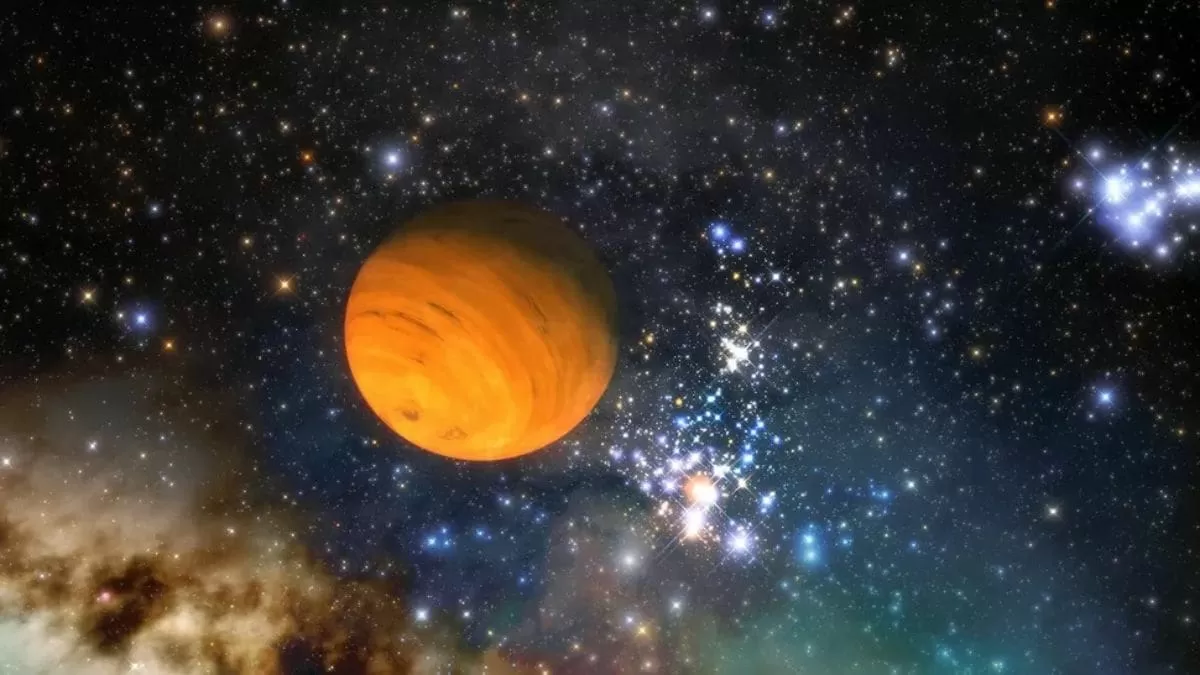The James Webb Space Telescope (JWST) has once again proven its worth by capturing new insights into SIMP 0136, a planetary-mass object that has been puzzling astronomers for years. Located around 20 light-years away, this celestial body has been floating freely in space, leaving scientists intrigued about its true nature. However, with the help of JWST’s infrared observations, we are now one step closer to unraveling the mysteries surrounding SIMP 0136.
First discovered in 2016, SIMP 0136 has been classified as either a rogue planet or a brown dwarf, both of which are objects that do not orbit around a star. This makes them difficult to study as they do not emit their own light and are often hidden in the vastness of space. But with the advanced capabilities of JWST, we are now able to get a closer look at this enigmatic object and gain a better understanding of its composition and characteristics.
One of the most fascinating findings from JWST’s observations is the intricate cloud layers present on SIMP 0136. These clouds, which are made up of different materials such as water, methane, and ammonia, provide valuable insights into the object’s atmospheric conditions. By studying the composition and movement of these clouds, scientists can determine the atmospheric dynamics of SIMP 0136 and how it differs from other known objects in our solar system.
Moreover, JWST’s infrared observations have also revealed temperature shifts on SIMP 0136, indicating the presence of different regions with varying temperatures. This is a significant discovery as it suggests that the object may have a complex internal structure, similar to that of a planet. This is in contrast to brown dwarfs, which are often considered as “failed stars” due to their lack of nuclear fusion. The temperature variations also hint at the possibility of an internal heat source, which could be responsible for the object’s unique features.
In addition to the cloud layers and temperature shifts, JWST’s observations have also provided potential insights into the chemical variations present on SIMP 0136. By analyzing the infrared spectra of the object, scientists have detected the presence of molecules such as water, methane, and carbon monoxide. These molecules are crucial in understanding the atmospheric conditions and the potential habitability of SIMP 0136.
The findings from JWST’s observations have opened up a whole new realm of possibilities for studying planetary-mass objects. With its advanced technology and capabilities, JWST has proven to be a game-changer in the field of astronomy. Its ability to capture high-resolution images and spectra in the infrared range has allowed us to study objects that were previously out of reach.
But the success of JWST’s observations would not have been possible without the hard work and dedication of the team behind it. The telescope, which was launched in December 2021, has been in development for over two decades and is a collaboration between NASA, the European Space Agency, and the Canadian Space Agency. This monumental achievement is a testament to the power of international cooperation and the determination of scientists to push the boundaries of our knowledge.
The insights gained from JWST’s observations of SIMP 0136 have not only provided a better understanding of this particular object but also shed light on the formation and evolution of planetary-mass objects in general. By studying these objects, we can gain valuable insights into the early stages of our own solar system and the potential for life in other parts of the universe.
As we continue to explore the vastness of space, the James Webb Space Telescope will undoubtedly play a crucial role in unraveling the mysteries of the universe. Its advanced technology and capabilities have already proven to be a game-changer in the field of astronomy, and we can only imagine the groundbreaking discoveries that are yet to come.
In conclusion, the James Webb Space Telescope has once again captured our imagination with its latest observations of SIMP 0136. With its infrared capabilities, we have gained new insights into this enigmatic object, bringing us one step closer to understanding its true nature. This remarkable achievement is a testament to the power of human curiosity and the endless possibilities that await us in the vastness of space.








